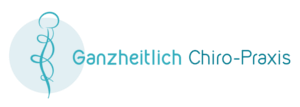Most patients who describe their pain as “shoulder pain”, indicating the upper part of their back, sometimes have no idea that most of their symptoms are actually coming from the lower part of their neck. How do I explain that to them? I normally use a picture like this one:
https://www.semanticscholar.org/paper/The-Biology-of-Prolotherapy-and-Its-Application-in-Hauser-Steilen/f685a5014042ca04f255e1d4bc45d332553c202b/figure/3
Fig. 1. Pain patterns from the different cervical facet joint levels
When people describe such a pain, most likely the lower neck is the source of the problem, although other times the pain may stem from a thoracic facet joint problem, an irritated rib, a muscle imbalance in the shoulder itself—which creates a strong compensation on the back of the patient’s shoulder—or a hormonal/nutritional issue.
Let’s use the most common scenario as an example: it is crucial to understand in which direction/s the most irritated vertebra of the lower neck must be freed in order to make the symptomatology better. To do that, palpation or muscle testing can be conducted. The use of muscle testing with the Applied Kinesiology methodology (you can find more information about AK in this link https://chiro-praxis-berlin.de/en/gesundheit-ist-abhaengig-von-einem-gleichgewicht-zwischen-struktur-stoffwechsel-und-psyche/) ensures that the adjustment is as precise as possible!
Together with a specific chiropractic adjustment, it is highly important to restore the functionality of the imbalanced muscles in the shoulders, adjust the rest of the compensation on the spine, and make sure that there are no problems coming from the feet, ankles, knees, or hips. The same applies to recent or old injuries/scars!
If the pain is especially severe, an ice pack can be used on the place that will be indicated by the chiropractor and held there for a maximum of 20 minutes (this can be repeated a few times a day, according to the patient’s needs). In addition, simple stretches may be provided in the case of predominant muscular involvement. It is very important to rest the irritated structure and to avoid any intense activity in order to create a better healing response. It is also possible you will be given some nerve flossing exercises depending on your needs. The major nerves in the upper limbs are:
The median nerve
The ulnar nerve
The radial nerve
It may take from a few days to weeks (or months if the problem is very serious) for the pain to get better. This depends on the intensity of the pain, the age of the patient, their lifestyle, and how long the problem has been present (older problems usually take longer to get better).
Yours,
Michele Oman
MChiro, BAppSc (Ex&SpS)


Leave A Comment
You must be logged in to post a comment.